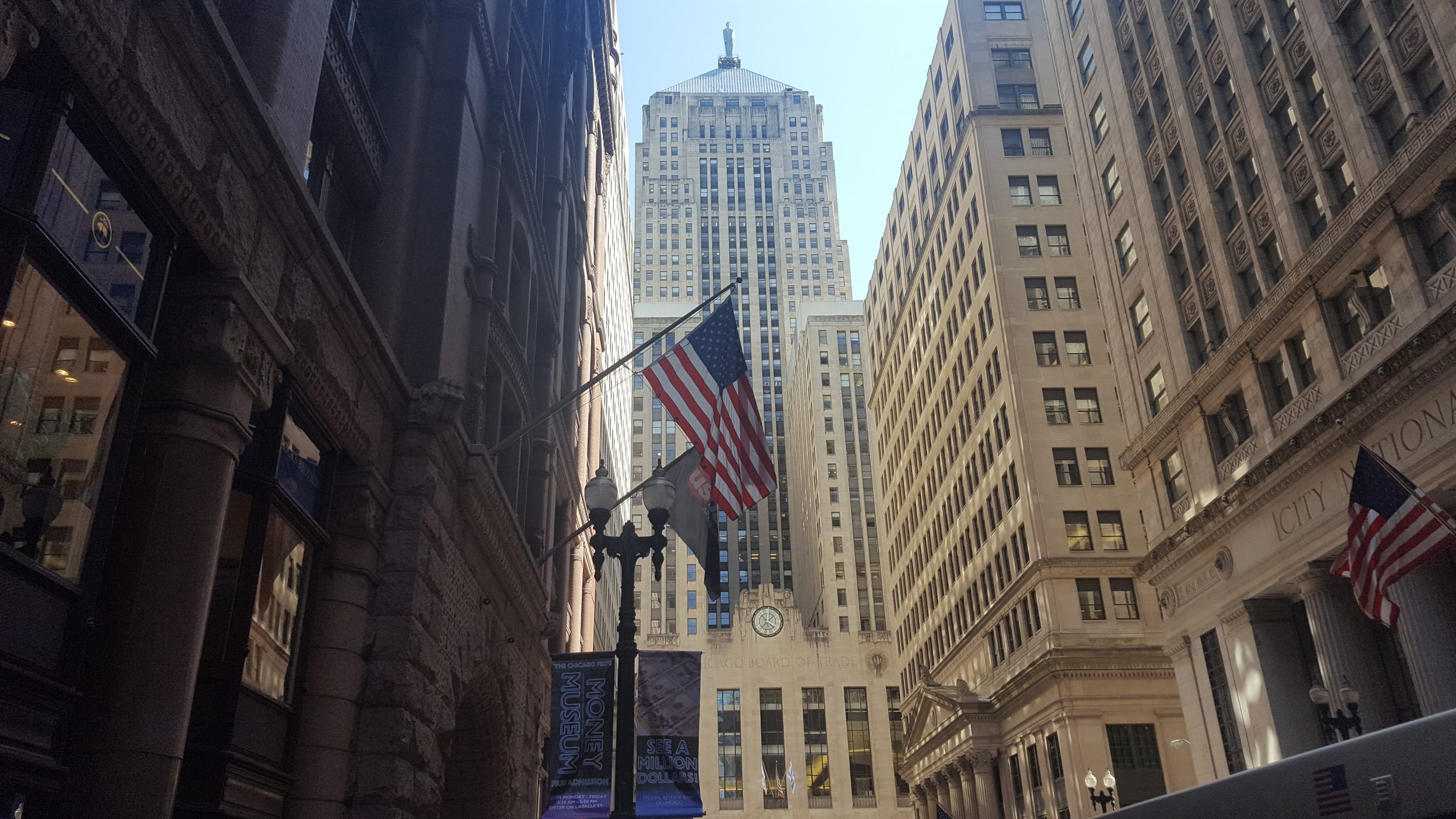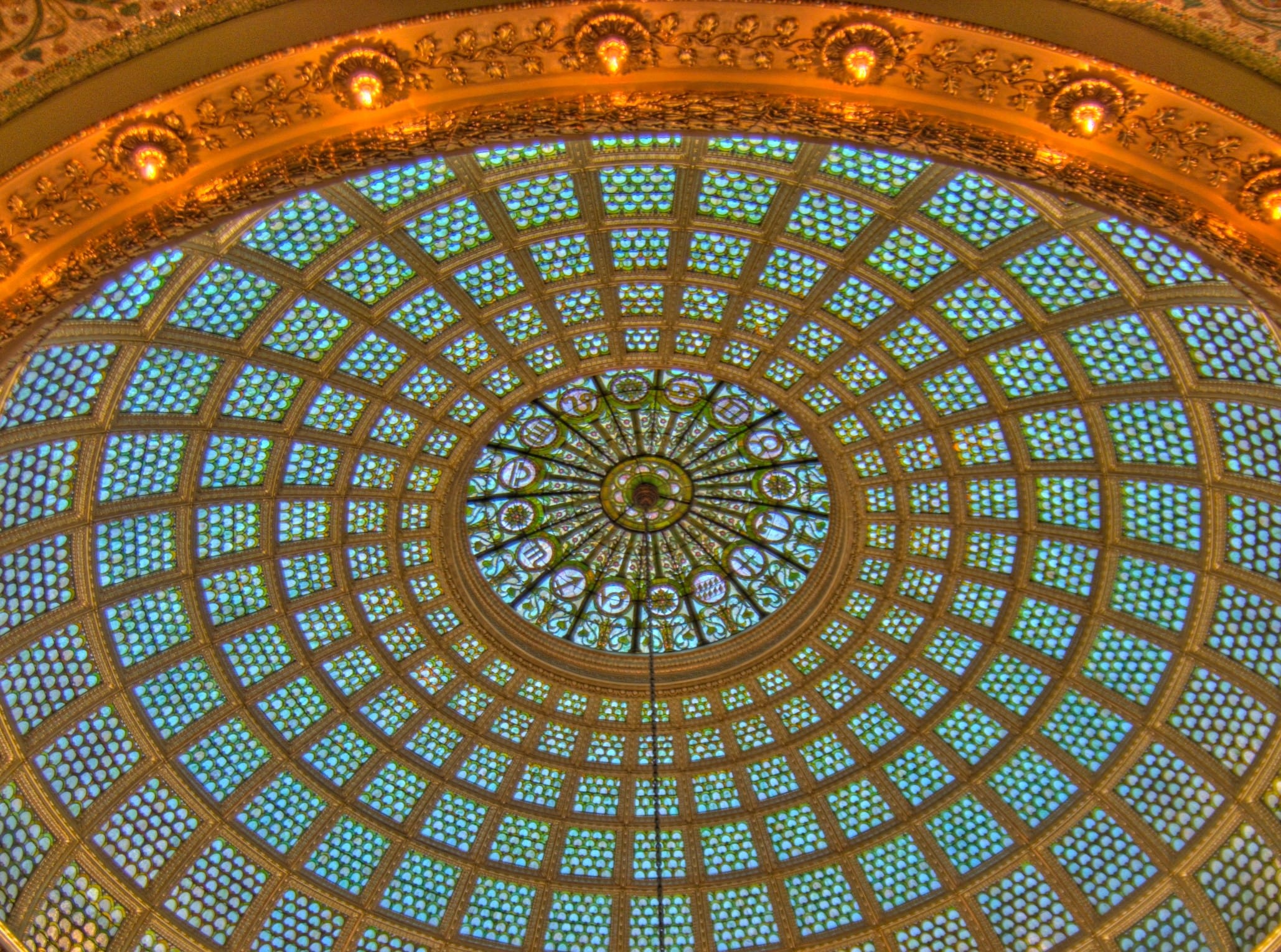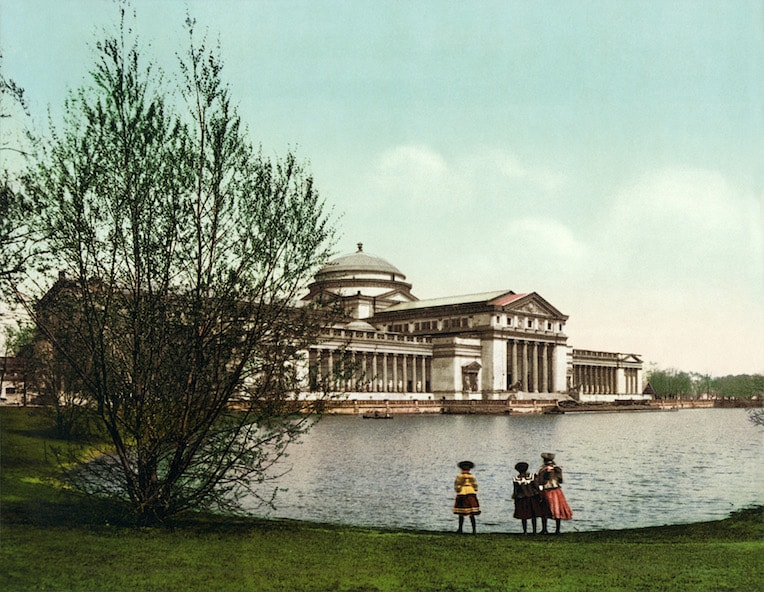Jens Jensen was a phenomenally prolific and skilled landscape architect. Of all the big names that helped develop our great American urban parks, this one feels under-sung to me. His works are some of the most beloved Chicago’s parks. Yet his life and legacy don’t have the same fame as Frederick Law Olmsted or the glamorous turn-of-the-century architects like Burnham and Sullivan. So with warmer days upon us, and thoughts turning to our amazing public parks, I figured some appreciation for the works of Jen Jensen was in order.
We research Chicago history and architecture like this while developing our live virtual events and custom corporate events. Join us for our public virtual events or book an exclusive team-building event for your private group. We can also create custom tours and original content creation about this Chicago topic and countless others.

Life and Style of Architect Jens Jensen
Jens Jensen was born in Denmark in 1860. Warfare destroyed his family home and saw the surrounding territory annexed to Prussia shortly thereafter. This traumatic experience left a deep mark on Jensen and would eventually prompt his emigration to America. Jensen developed a keen love for the natural world before leaving the Old World. As his biography on the Cultural Landscape Foundation’s website states,
“Much of his education took place outdoors, where Jensen learned to celebrate the change of seasons and their place in the legends and mysteries associated with the Danish landscape and its history. Through this experience he cultivated a fascination with cultural traditions and nature which would later play a major role in his design work and conservation activities after his immigration to the United States in 1884.”
Here in Chicago, that love of the natural world played a huge role in his rise up the ranks of the West Park Commission. He worked as a laborer and rose to foreman. By 1888, only four years after arriving in the US, Jensen designed the American Garden in Union Park. Jensen filled this garden was filled with naturally-arranged wildflowers, which he’d transplanted from the nearby prairie. It’s hard to overstate how new and different this would’ve felt to Gilded Age Chicagoans. Theirs was an an age full to bursting with classically-designed and highly formalized European-style gardens. Jensen’s approach to landscape architecture was breaking the mold.
West Park Redesigns

The West Park Commission handled the construction and care of Garfield, Douglas, and Humboldt Parks. The grounds and their connecting boulevards were mostly designed in the 1870’s. Corruption and lack of money had left them in a moldering or incomplete state by the turn of the 20th Century. In comes our man Jens Jensen. He designed formal gardens, additional buildings, and new lagoons and creeks for the massive West Side parks.
Humboldt Park demonstrates his touch most clearly. Jensen redesigned the park’s waterways to look and feel like a slow, lazy prairie river wandering amidst cattails and grasses. It’s easy to feel a million miles out in the country walking along the Humboldt Park lagoon. Jensen’s Prairie Style boat house also adorns the lagoon. Its architectural design lends the park a glimmer of Progressive Era prestige.
Columbus Park

Columbus Park is the only Chicago park that Jens Jensen designed entirely by himself. The far West Side swarmed with people, but had very little open recreational space. So the West Park Commission, er, commissioned Jensen to do what many consider to be his finest work in landscape design for our Chicago parks.
My favorite element of this sprawling park are the endlessly charming cascades and waterfalls. The water courses are lined with stacked stones, which create the feeling of stepping into a remote grotto. Jensen meant them to resemble the natural rock outcroppings of the Midwest’s post-glacial landscape. Columbus Park features the only Chicago example of Jensen’s beloved “council ring.” This stone circle invites visitors to sit down for storytelling and contemplation among the brush.
Garfield Park Conservatory
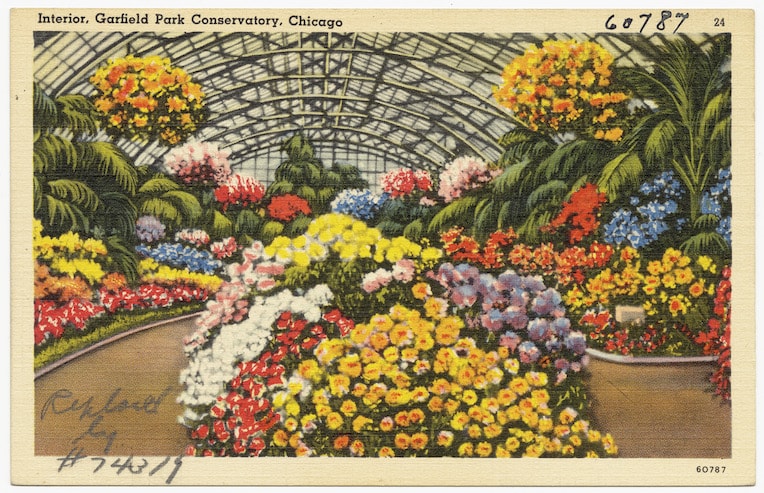
The Garfield Park Conservatory is likely the most celebrated and widely-visited work of architecture by Jensen. The conservatory is also neck and neck for the Michigan Avenue Bridge for the title of Chicago’s most heavily-used engagement and wedding photos location. So mind you don’t step on some bride’s veil if you visit.
Supposedly, Jensen designed the Prairie Style building to look like a Midwestern stack of hay. Which…I think I see that? It’s a little abstract for me, to be honest. But I can definitely see that contrasted to the more ornate architecture of the Lincoln Park Conservatory.
Regardless, the Garfield Park Conservatory’s main claim to fame came from its interior architecture. Jensen designed this space to be a natural landscape under a glass roof. This stood in stark contrast to previous conservatories, where exotic plants were merely potted and arranged. The effect, especially in the midst of a long Chicago winter, is utterly transporting.
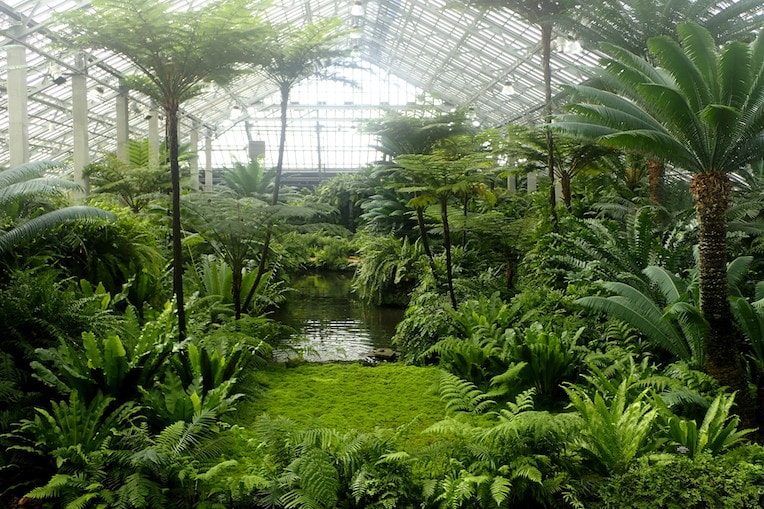
Jens Jensen Outside Chicago
You can spot some of Jensen’s building architecture and landscape architecture if you’re doing some Midwestern road-tripping this summer. Henry Ford was a huge fan of Jensen and hired the master for several designs. These include the grounds of Henry Ford’s estate, Fair Lane, and magnum opus, the Henry Ford Museum and Greenfield Village, right outside Detroit. Jensen also designed the Abraham Lincoln Memorial Garden in Springfield and created the Clearing Folk School in Wisconsin. It’s interesting to note that, much like his contemporary Frank Lloyd Wright, Jensen used Chicago as the capital of his Midwestern architectural design empire.
Regardless of where you see his work, I think it’s fair to say that Jens Jensen had a huge impact on Chicago’s recreational spaces. Jensen is the landscape equivalent of Wright’s ground-breaking architecture. He’ll likely never have the architectural profile of Wright, but his is a name and approach to landscape design worth knowing.
– Alex Bean, Content Manager and Tour Guide
About Chicago Detours
In business since 2010, Chicago Detours is a passionate team of educators, historians and storytellers. We applied a decade of experience as one of Chicago’s top-rated tour companies to become a virtual event company in 2020. We bring curious people to explore, learn and interact about Chicago’s history, architecture and culture through custom tours, content production, and virtual events.
